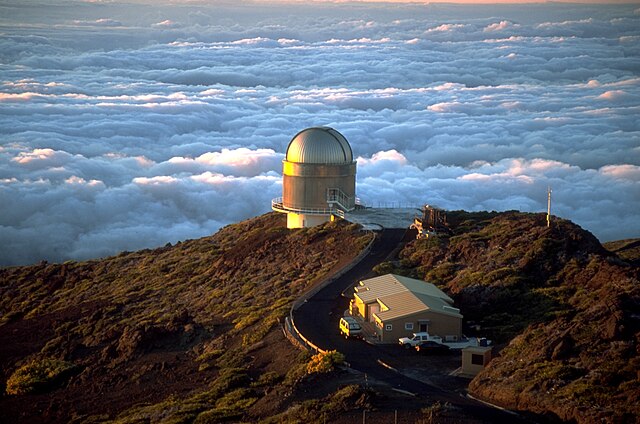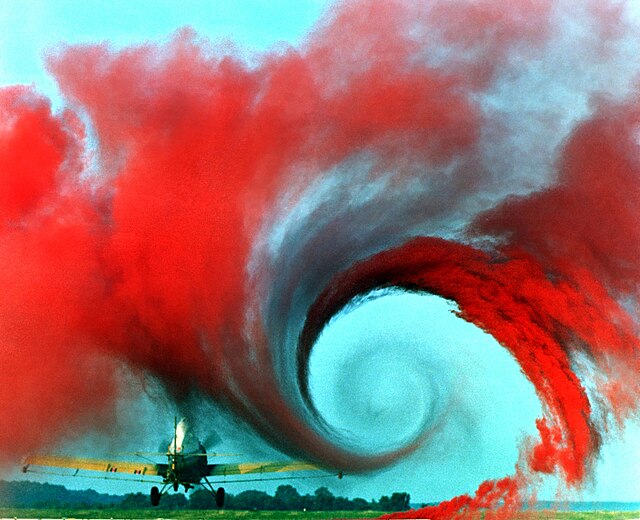In astronomy, seeing is the degradation of the image of an astronomical object due to turbulence in the atmosphere of Earth that may become visible as blurring, twinkling or variable distortion. The origin of this effect is rapidly changing variations of the optical refractive index along the light path from the object to the detector.
Seeing is a major limitation to the angular resolution in astronomical observations with telescopes that would otherwise be limited through diffraction by the size of the telescope aperture.
Today, many large scientific ground-based optical telescopes include adaptive optics to overcome seeing.
Astronomical observatories are generally situated on mountaintops, as the air at ground level is usually more convective. A light wind bringing stable air from high above the clouds and ocean generally provides the best seeing conditions (telescope shown: NOT).
Astronomers can make use of an artificial star by shining a powerful laser to correct for the blurring caused by the atmosphere.
This amateur lucky imaging stack using the best of 1800 frames of Jupiter captured using a relatively small telescope approaches the theoretical maximum resolution for the telescope, rather than being limited by seeing.
In fluid dynamics, turbulence or turbulent flow is fluid motion characterized by chaotic changes in pressure and flow velocity. It is in contrast to a laminar flow, which occurs when a fluid flows in parallel layers, with no disruption between those layers.
Laminar and turbulent water flow over the hull of a submarine. As the relative velocity of the water increases turbulence occurs.
Turbulence in the tip vortex from an airplane wing passing through coloured smoke
Flow visualization of a turbulent jet, made by laser-induced fluorescence. The jet exhibits a wide range of length scales, an important characteristic of turbulent flows.
The plume from this candle flame goes from laminar to turbulent. The Reynolds number can be used to predict where this transition will take place







